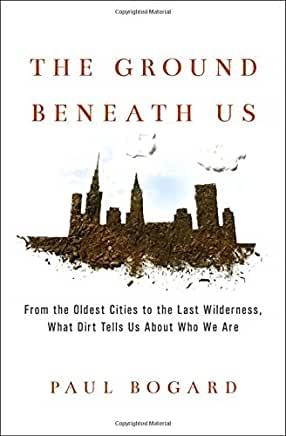Tree rings reveal age, Earth's atmosphere reflects the state of its own health, and waterways move to the tune of a changing ability to support life. The ground upon which humanity stands also discloses itself in a myriad of ways: the quiet seasonal joy of flowers blooming and food growing, the terror and beauty of a volcanic eruption, the fragility of life on the battlefields of Gettysburg and the heartbreaking remnants left behind, discovered in the soil. The ground tells us much about human history, feeds and delights us in the present and informs the viability of our future.
So, what is the result when we pave vast areas of soil, destroying its life, only to cover the remaining with development for a burgeoning population? Or, we continue to add harmful inputs to the soil until it becomes a medium used only to support an immense and unhealthy monoculture?
And what are the consequences to wildlife as habitat declines, migration paths disappear, extinction looms, and humans draw ever further away from the joy of the natural?
Scientists have spent decades in the study and amelioration of air and water quality. Education of the public and enforcement of laws continue. But what of the nearly forgotten resource of Earth's ground? Is the discussion beginning too late to achieve protection and restoration of this crucial resource?
Author Paul Bogard in The Ground Beneath Us (Little, Brown and Company, 2017) has drawn upon resources in various areas of the world to assist in his quest to wonder, investigate, question and observe the ground or, as he puts it, “what we see when we look down, the planet as we experience it in our day-to-day lives.” (p.4)
I like to believe that the author has designed this book as a symphony, offering up five pieces all related to the wonders and the despair of ground. The titles of three of these pieces are each three words long, linked by the conjunction ‘and'. The linked words describe types of ground that appear to be opposite; but Bogard wants to impress that the boundaries between the two types are often blurred.
The ‘movements' in each piece are the actual places the author visits to find answers. There are very harsh realities found in many of these destinations. Let us begin:
The Ground Beneath Us
From the Oldest Cities to the Last Wilderness, What Dirt Tells Us About Who We Are

The reader accompanies the author to Manhattan, to the top of One World Trade Center where portions of the physical layout of the island are visible. Bogard's plan is to return to street level, then walk through neighborhoods to find what remains of uncovered ground. Read on in his prose to learn that the sheer physical weight of all which covers Manhattan's ground can be calculated in tonnage. There is a world in covered ground that is no longer available to sustain life.
II. Paved and Hallowed in five movements
Manhattan, Mexico City, London, Northern VA, Gettysburg
By some estimations, mid-21st century will bring an additional three billion humans to feed, with decreasing availability of uncovered land. Read on for an examination of humans' relationship to nature and the consequences of residing too far from the microbiota in living ground. Learn about the term fragmentation when used in an ecological sense. And note the mention of Stockton, CA in the section (p.75) describing the perils of worldwide car-centered growth.
III. Farmed and Wild again, in five movements
Bishopstone, Soil, Ames, Grass, The Sandhills
Soil sustains humanity physically, emotionally, and spiritually. Maintaining the health of the living ground left in the face of population growth is paramount. Read on to learn that ground has become a Wall Street investment, creating a plantation farming redux. A longer-term approach will be key: crop diversification and rotation, fewer harmful inputs to soil, a return to regenerative farming practices, protection and restoration of grasslands, wetlands, and the ground along bird migration paths. Learn more about the sandhill crane and predictions for its longevity. Diversity is what makes the world---if it is lost, the world fragments.
IV. Hell and Sacred finale
Appalachia, Treblinka, Alaska, The Sierra Nevada, Home
Here is the point in the book where a different understanding of hell is put forth. Not as a place but, more usefully, a situation of degradation and despair: changes to earth's geology caused by fracking, thawing of permafrost which will eventually expose more carbon than has been released since industrial revolution times, estrangement from the ground, from others, from our own selves. Author Bogard gently lays out to the reader that if we want a world where we know the connections that keep us alive, those connections between ourselves and others and between ourselves and nature, then there are choices to be made now, with wisdom and courage.
Resources, gratitude, additional reading, recognition, quotations, statistics, stories, and results of fascinating studies abound in the pages between pgs.265 and 297
Reviewer's note: I found this to be a fascinating, emotionally difficult book to read but as the author quoted, and I am paraphrasing, “if you don't know what is happening, you cannot fix it.”